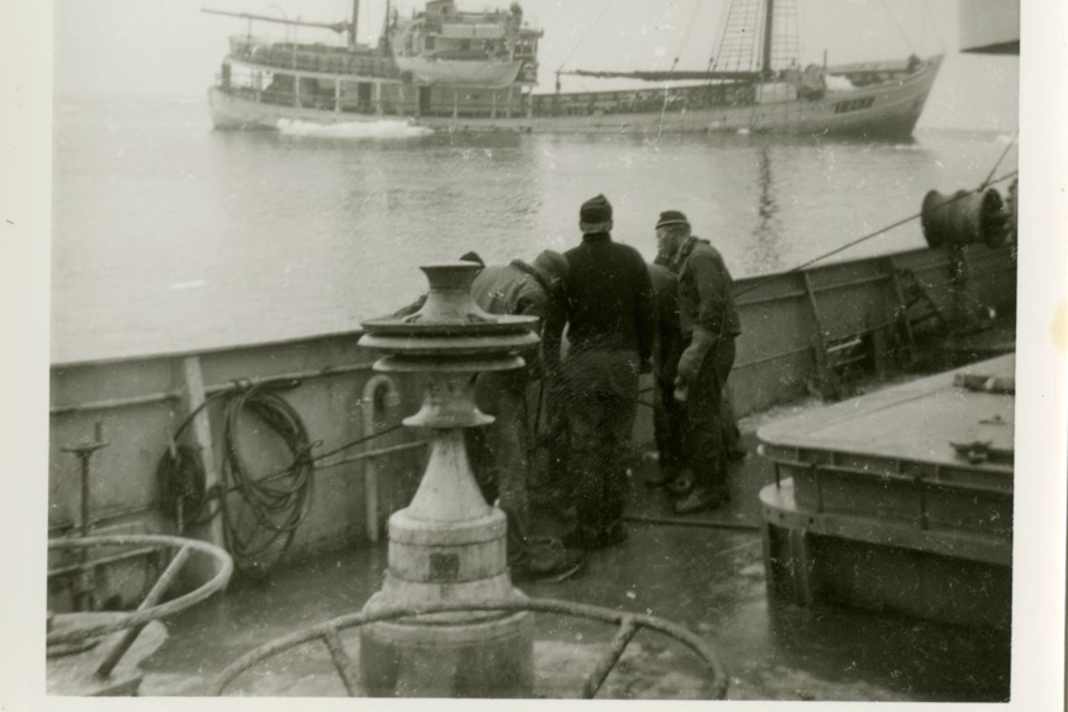





An expedition of the Royal Canadian Geographical Society (RCGS) has located the former research vessel "Quest" at the bottom of the Labrador Sea. The ship became famous because Sir Ernest Shackleton died on it while on his way to Antarctica. His death marked the end of the heroic age of polar exploration.
The "Quest", which was later converted into a seal trawler, sank north-west of St John's in 1962. She had run into an ice field and sprung a leak; footage of her sinking has been preserved.
The current expedition involved an international team of wreck searchers led by RCGS CEO John Geiger. He said: "With the discovery of the "Quest" one of the final chapters in the extraordinary story of Sir Ernest Shackleton is closed." Shackleton was known for his courage and brilliance as a leader in times of crisis. "The tragic irony is that his death was the only one that ever occurred on one of the ships under his direct command," emphasised Geiger.
The search was preceded by an intensive analysis of historical data. Based on this data, a search team set off over the past few weeks. They found the wreck at a depth of 390 metres using high-resolution sonar images.
Canada once rejected an expedition to the Arctic
The discovery site off the coast of Canada is of historical significance, not least because Shackleton had originally planned an expedition to the Arctic with the "Quest". However, this was not authorised by the Canadian government. The polar explorer therefore decided to head for the Antarctic instead over a hundred years ago.
One of the first to learn of the ship's discovery was Alexandra Shackleton, the granddaughter of the famous explorer. She has been endeavouring to preserve her grandfather's legacy for years.
More on the topic:
The Shackleton-Rowett expedition left London in September 1921. Tragically, Shackleton died of a heart attack on South Georgia in January 1922 and was buried there at his wife's request. The expedition continued its journey and later returned to London. The "Quest" was then sold to a Norwegian family and subsequently sailed as a seal trawler.
During the Second World War, she was requisitioned by the Royal Canadian Navy and later converted into a minesweeper. By the 1960s, she had already visibly aged. During a voyage in the Labrador Sea, the "Quest" finally suffered major damage; water penetrated and the ship sank on 5 May 1962. Fortunately, the crew managed to get to safety beforehand. A photographer captured the sinking on film.
Place of discovery only around one and a half nautical miles away from the traditional site of the accident
The coordinates of the accident site were reported by Captain Olav Johannessen, which was crucial for the current discovery of the wreck. The scientists also consulted historical weather and ice data to refine the search. Thanks to a towed sonar system, they were able to locate the "Quest" last 9 June, about one nautical mile away from the position reported by Johannessen.
The next step is to carry out a detailed survey of the wreck. The scientists want to use a diving robot for this.
One expedition member summarised the success of the search as follows: "Shackleton was patient when he needed to be, he acted decisively but never rashly. And that's exactly what we had to do here: follow our plan and be patient. Only that would pay off - and it did!"
This might also interest you:
- "Gjøa": Roald Amundsen's legendary expedition yacht
- "Fram": An expedition yacht with a great history
- "Wanderer III": A cruising yacht classic and the 96th degree of longitude
- Forgotten history: How a Bavarian builds a sailing boat and sails to India
- Portrait: Georg Dibbern makes history in German sailing

